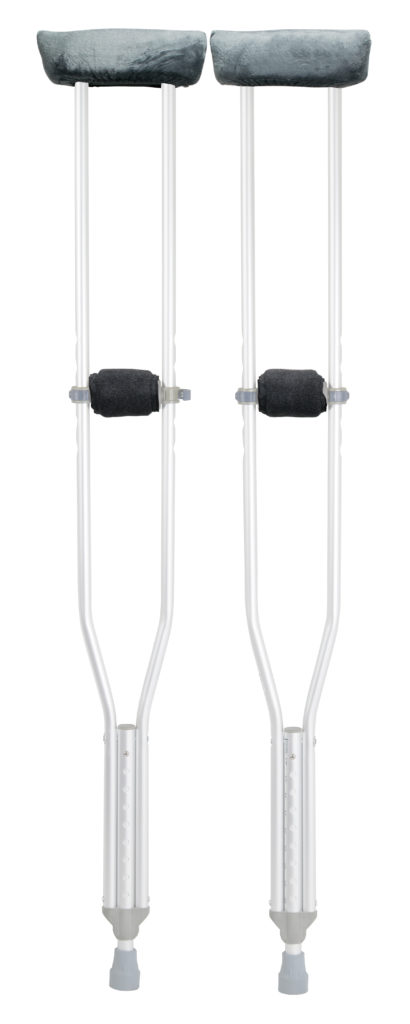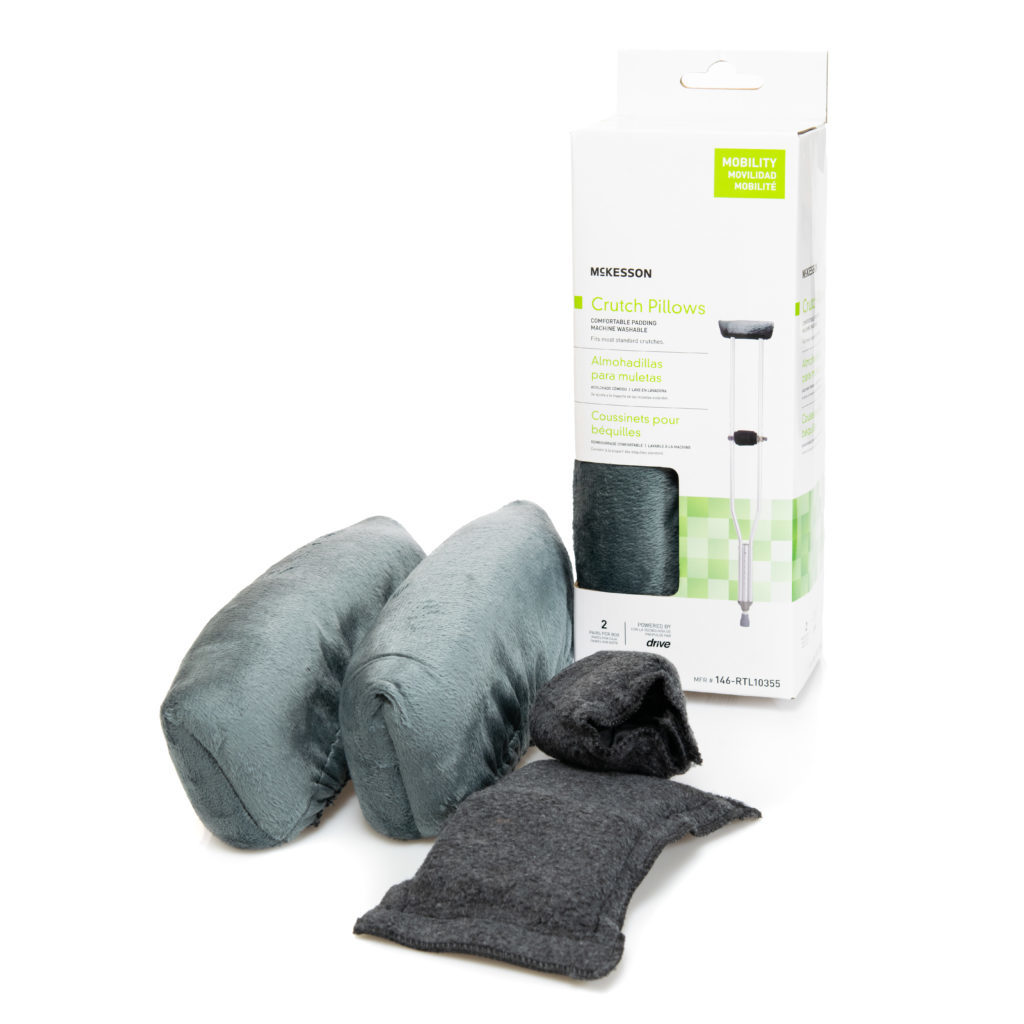
Purchasing a set of crutches may seem straightforward, but there are many different crutch parts and accessories to consider before buying. Take a look at the common types and features for crutches.
Crutches by Type

The most common type is the axillary crutch, where the top nests in the armpit. They are relatively easy to use and don’t require a lot of upper body strength to maneuver successfully. However, this type of crutch can become uncomfortable as they apply pressure to the armpits and cause the wrists to cramp with extended use.
Forearm crutches are another type of mobility device for walking support. This crutch is called a forearm crutch because it has a band that wraps around the forearm.
Forearm crutches are a practical choice for people who experience a long-term health condition or injury but can work for anyone. This mobility device typically requires less upper body strength than underarm crutches, although they generally take more time to master.
Weight Bearing Capacity
It is important to consider the weight-bearing capacity of a set of crutches before making a purchase. Each type of crutch will bear your weight differently.
With underarm crutches, your weight is not solely supported by the arms but by the back and shoulders. Further, dropping all of your body weight onto the crutches can result in further injury. Your legs must be able to support some of your weight to use this style crutch.
Forearm crutches are used independently, meaning that one arm will control one crutch independently of what the other is doing. This means that your body weight will shift from crutch to crutch. Your grip on each crutch becomes very important for balance and control.
Ease of Use
There are two major aspects to consider: the short-term learning curve for working the crutch and the long-term ease of use that the crutch affords. For example, it is typically easier to learn how to walk with the underarm crutch but may be more uncomfortable to use over time. At the same time, the forearm crutch is typically more tricky to learn but doesn’t come with the same level of discomfort that often accompanies long-term use of the underarm crutch.
Accessories for Crutches
To make your experience walking with crutches more comfortable, consider the following accessories for crutches:
- Rubber crutch tips
- Ice crutch attachments
- Fleece or gel covers
- Crutch pillows

The right accessories can change the way the crutch feels and functions. For example, gel covers for axillary crutches might make them more comfortable to use. Simply Medical offers various options for crutches and accessories. Click below to shop our products.

